How much does it cost to tile a bathroom?
How much does it cost to tile a bathroom? Finishing touches such as this often get left off budgets but ensure you know what to expect so you have enough in the pot to complete your project in style
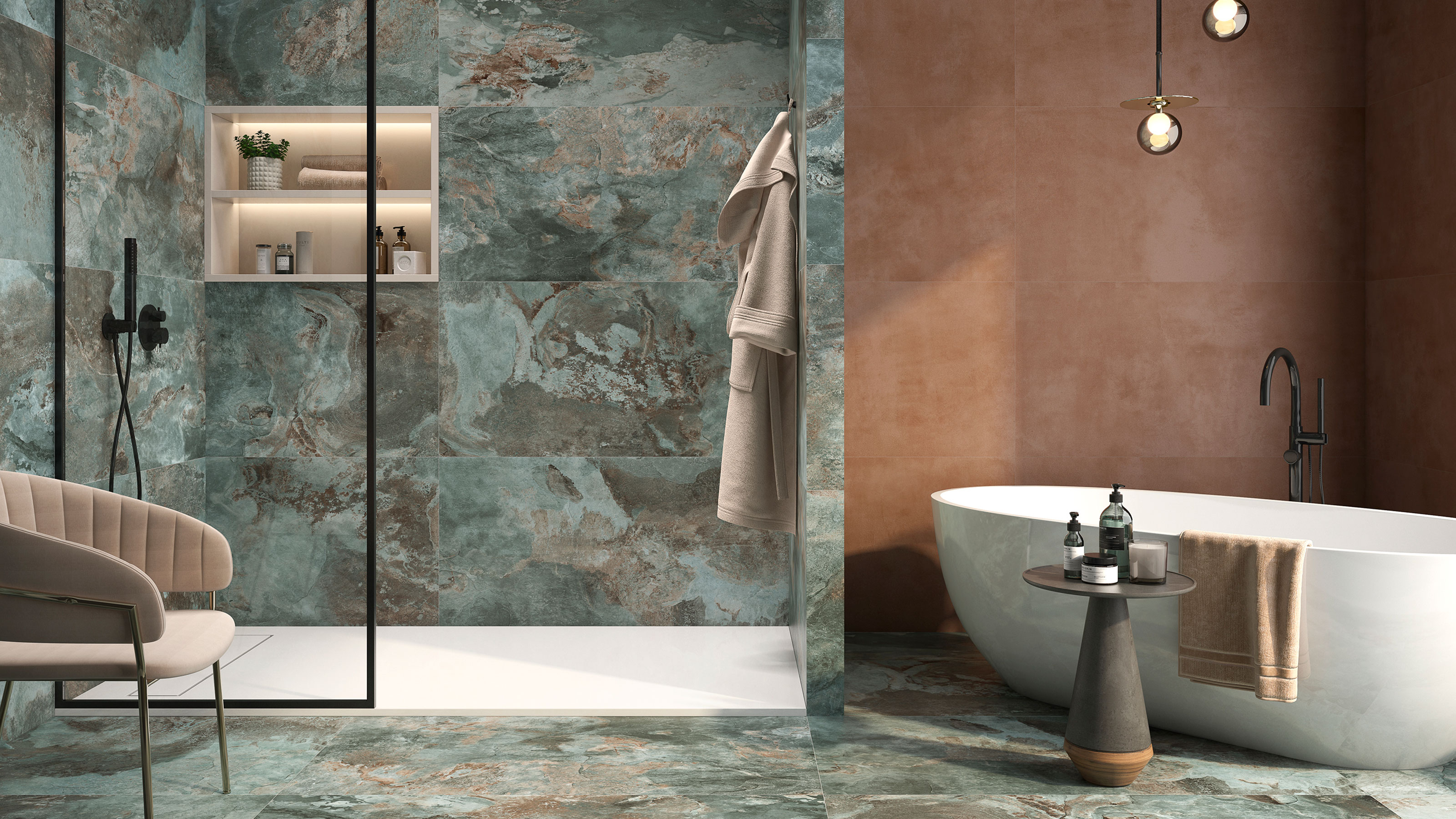
Just how much does it cost to tile a bathroom these days? There are actually several elements to consider when it comes to this decorating task and it is pretty easy to overlook some of the materials and steps required when budgeting for the job.
When calculating your new bathroom cost, be sure to include easily overlooked essentials such as towel warmers, ventilation, lighting — and tiles. While most people start out working out how much the more obvious items, such as sanitaryware, brassware and plumbing are going to cost, don't underestimate the impact these smaller details can have on your overall costs.
Here, we take a look at how much it costs to tile a bathroom in 2023 and include some handy tips on where to make savings too.
How much does it cost to tile a bathroom?
If you are just starting out on your new bathroom project, whether you are starting from scratch or taking a retrofit approach, the cost of fitting a bathroom is likely to be on your mind.
"If you’re planning a complete bathroom renovation, to include removal/disposal and replacement of the suite, radiator, floor and wall tiles, plus new lighting, extractor fan and decorating, you can expect to pay on average around £7,000," advises senior quantity surveyor and estimator Tim Phillips.
But how much of this figure is made up by the tiles you buy, the materials needed to fix them to the walls and floors and labour?
Obviously this will vary very much on the tiles you choose and the size of the room you are tiling, as well as how much work you plan on taking on yourself.
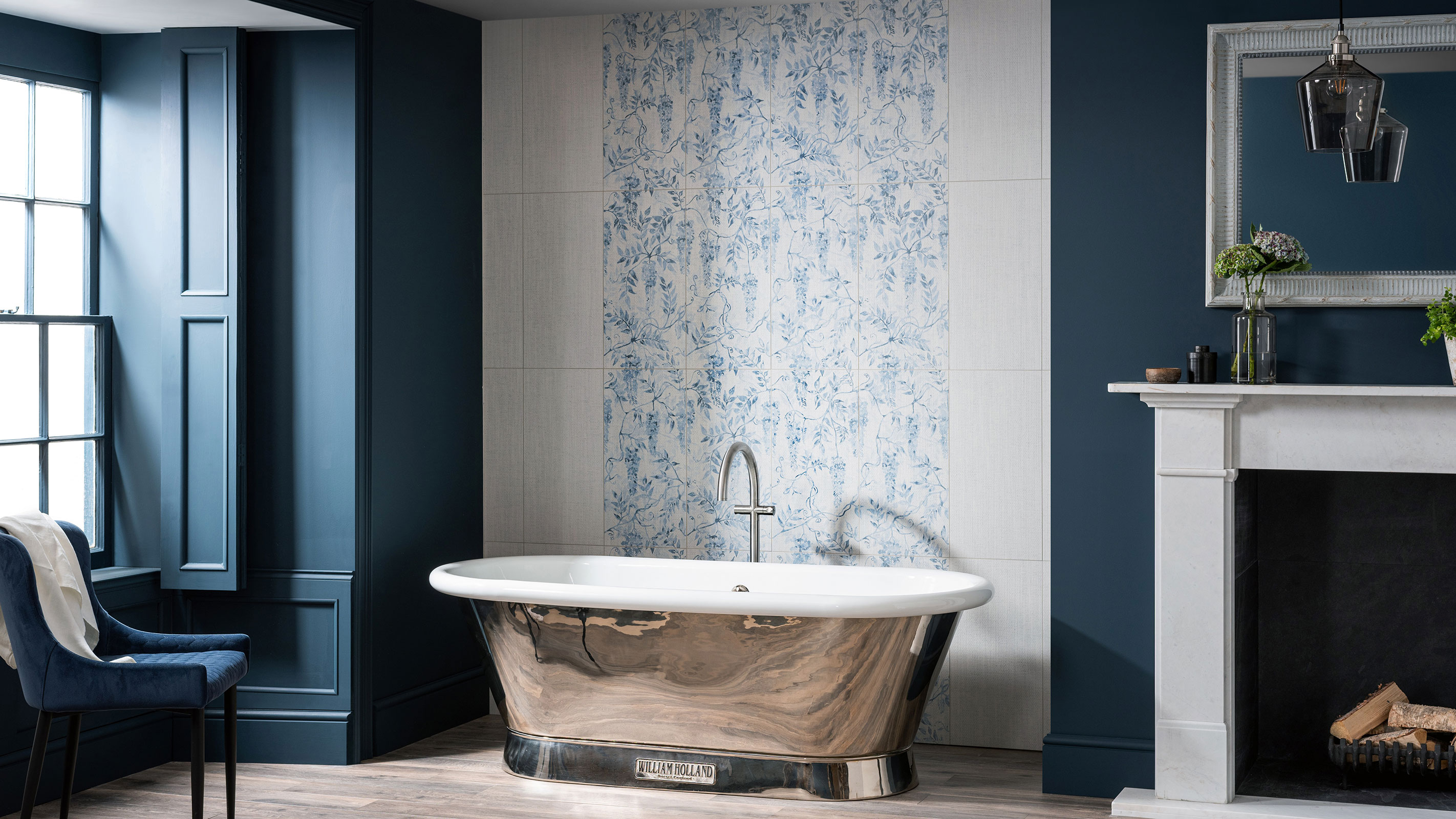
How much do bathroom tiles cost?
The cost of bathroom tiles varies massively depending on the materials you select, the size and quality of the tiles and what kind of quantity you are purchasing — as well as your bathroom floor tile ideas or those you have your heart set on for your walls.
"Tiles cost from as little as £5/m2, but if your budget permits you can also pay over £200/m2 for designer glass tiles," advises Tim Phillips.
At the very cheapest end of the market lie plain white, standard sized, square ceramic tiles. At the other end of the scale lie natural stone and glass tiles in unusual shapes and sizes and even bespoke tiles, specified to create a one-off image or pattern.
Tiles are most commonly priced per square metre so to get a better idea of how much you are going to need to set aside for tiles you need to begin by working out the size of the area you want to cover. Multiply the length and width of each individual area that you want to tile then add them all up to get the total metre square of tiles you will require. Without this, you won't be able to get a clear idea of how much your tiles are going to come to.
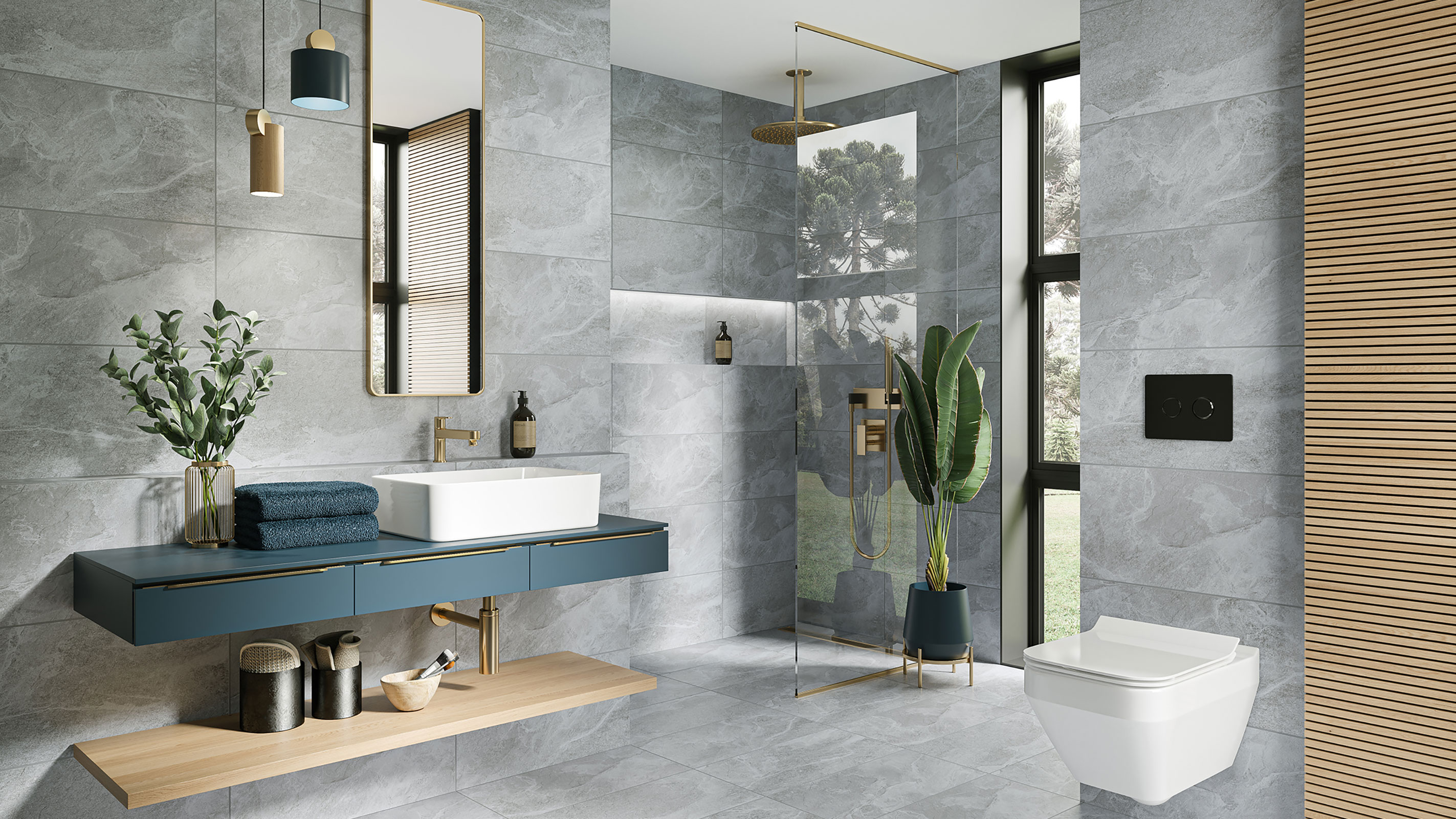
How much do tilers charge?
Of course it isn't just the tiles themselves that you need to budget for — getting them on to the walls or floor is also going to cost you money.
According to Checkatrade, on average, tilers charge around £300 per day and they estimate that the average bathroom will cost between £800 and £1,200 to tile.
"The more complex the tile laying pattern, the longer it takes to complete, pushing labour costs higher than for the same area with a simpler pattern," explains Tim Phillips. "If you’re tiling a large area, costs will naturally rise, but you can save money by choosing larger format tiles, as they are quicker to fit. Patterns such as herringbone will also need a lot more cuts, so wastage allowances should be increased from 10-15% to 20%."
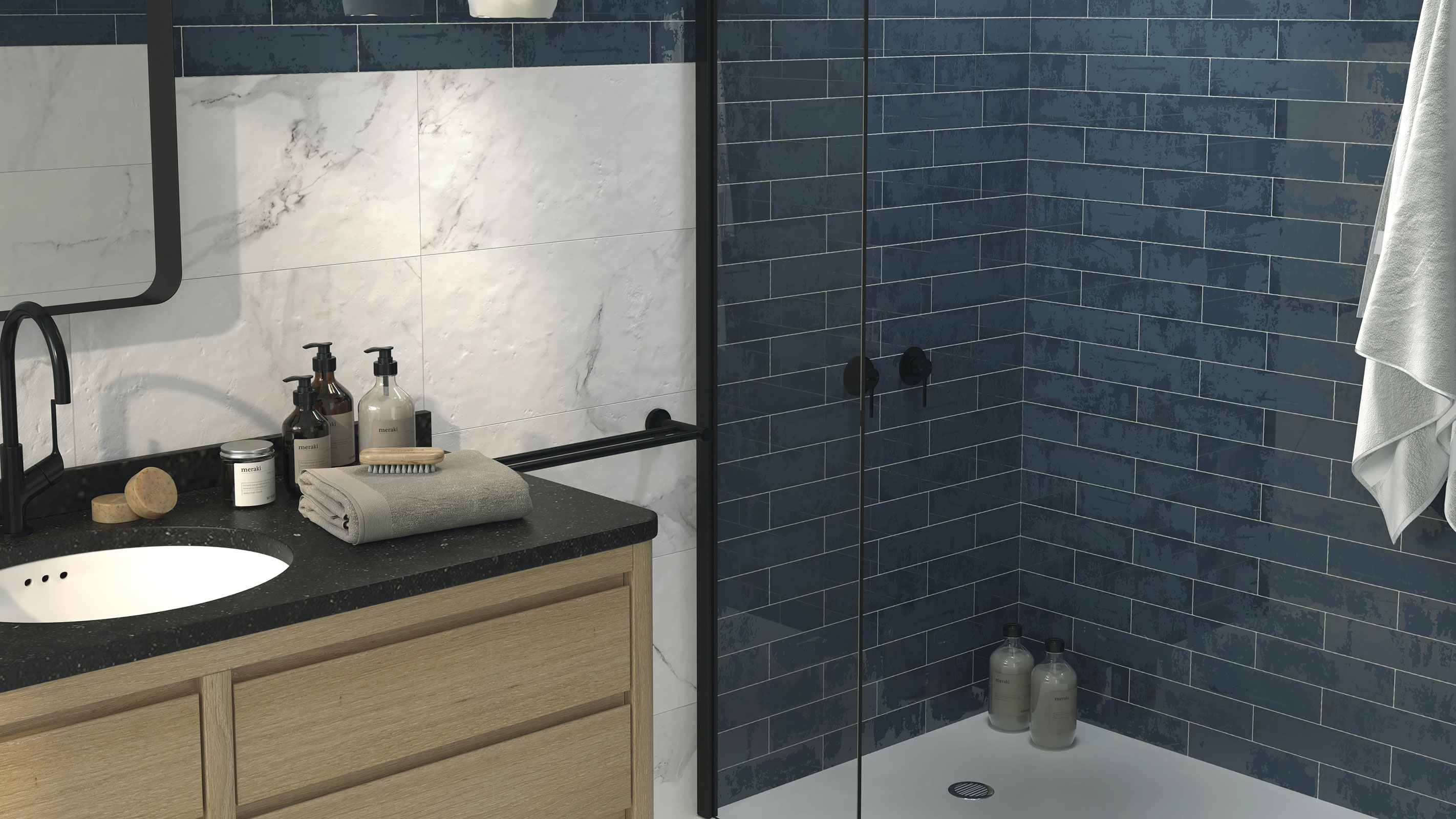
Can I tile my own bathroom?
Many people do choose to take on the task of tiling their own bathroom walls and floors and if you are wondering how to tile a wall you should be pleased to learn that it tends to be a very achievable job for the confident DIYer.
That said, the types of tile you choose will have a big impact here — while standard-sized square tiles, laid in a regular pattern on nice level walls and floors might not be too much of push to get right, if you want to start playing around with complex patterns, have uneven surfaces to contend with or have chosen very heavy, large format tiles, made from natural stone or glass, you should really be considering calling in an expert.
What should I include in my tiling budget?
As mentioned previously, it isn't just the tiles themselves that you need to budget for when tiling. Don't forget to include the following when totting up costs:
- Labour costs
- Grout and adhesive (set aside around £10/m2 for these)
- Getting walls and floors in good condition (uneven surfaces will need levelling and your tiler will expect them to be plastered)
- Removing and disposing old tiles
- Spacers and any tools you require if doing the tiling yourself
- If you plan on placing underfloor heating beneath the tiles, don't forget include the cost of a decoupling membrane to prevent your new tiles cracking if you’re tiling on new concrete screeds or suspended floors.
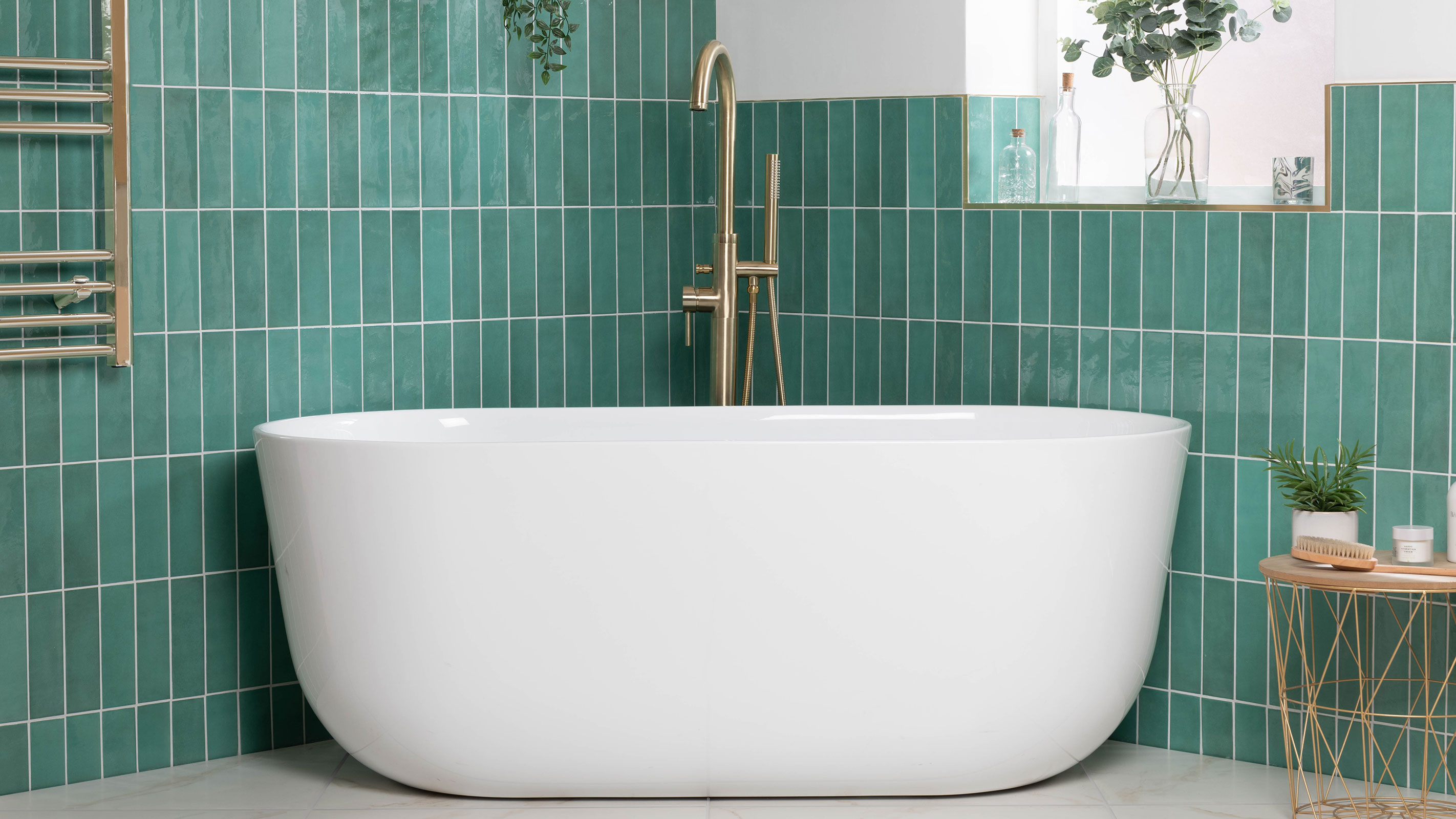
How can I save money on tiling a bathroom?
Trying to keep costs down? Colin Lincoln-Evans, buyer at Tile Mountain, offers the following tips|:
- Choose small format ceramic tiles, less than 30x30cm in size. This will allow the use of a small rail tile cutter rather than a large, expensive cutter required for large format porcelain tiles.
- The small size, porous ceramic tile body will allow the use of a ready mixed adhesive, whilst tiles over 30x30cm or porcelain tiles require the use of cementitious powder adhesives, which are recommended to be mixed with power tools.
- For installation, choose a straight bond, with the tiles set out side by side, either horizontally or vertically. When compared to the common 50:50 brick bond pattern, this will generally reduce the loss of tiles due to unusable off-cuts.
- To save budget, only tile the areas that are in direct contact with water e.g. behind the basin, around the bath, in the shower.
Get the Homebuilding & Renovating Newsletter
Bring your dream home to life with expert advice, how to guides and design inspiration. Sign up for our newsletter and get two free tickets to a Homebuilding & Renovating Show near you.
Natasha was Homebuilding & Renovating’s Associate Content Editor and was a member of the Homebuilding team for over two decades. In her role on Homebuilding & Renovating she imparted her knowledge on a wide range of renovation topics, from window condensation to renovating bathrooms, to removing walls and adding an extension. She continues to write for Homebuilding on these topics, and more. An experienced journalist and renovation expert, she also writes for a number of other homes titles, including Homes & Gardens and Ideal Homes. Over the years Natasha has renovated and carried out a side extension to a Victorian terrace. She is currently living in the rural Edwardian cottage she renovated and extended on a largely DIY basis, living on site for the duration of the project.

